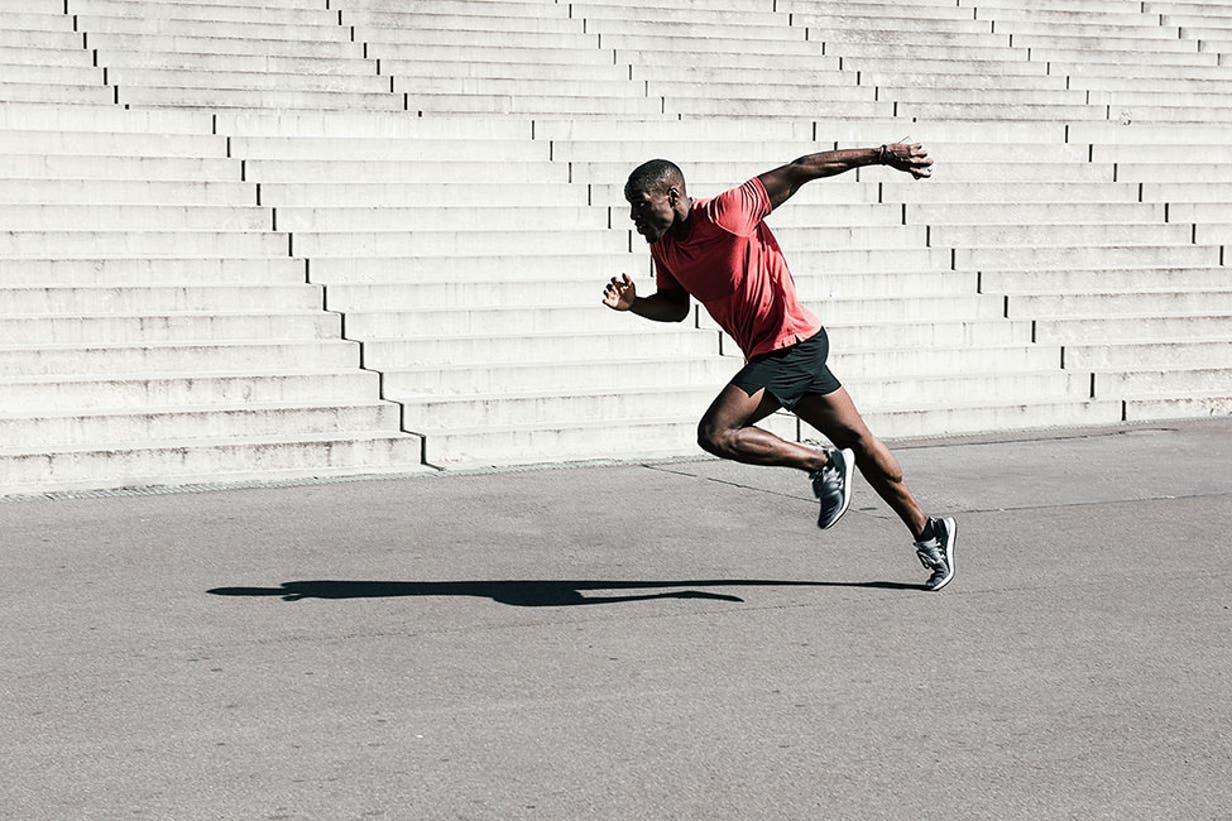Used to being doubled over and out of breath from sprinting 100 meters to catch the bus… and still you end up missing it? Well those days are over. Once you’ve read this, you’ll know the importance of sprinting and the best technique so you’re never left out in the rain waiting for the next bus to come along. Here’s the hows and whys of short distance sprinting.
Sprinting – what’s it all about?
Short and sweet: sprinting is running a short distance at maximum pace. You know you’re sprinting when you reach the limits of your physical capacity. The benefits of sprinting are numerous. But most importantly, it enhances your speed, explosive power and running technique. Running at your limits shocks your organisms in a positive way. A high after-burn effect and the release of growth hormones are the wished-for consequences. Growth hormones help you burn fat, build muscle and increase your overall performance. Despite the short distance, sprints can be very exhausting. It’s hardly possible to do several runs in one day without sacrificing performance. But don’t shy away – sprinting is something you can definitely improve at.
What happens within your body during sprinting?
Initially, your body will shortly enter an anaerobic phase before passing into an aerobic phase. What does this mean? Let’s break it down: during the first stage, you burn more glycogen than fat, produce lactic acid and adenosine triphosphate, necessary for muscle contractions. You use high-twitch muscle fibers to create fast, high-intensity movements. Even well-trained athletes can only run in this state for up to 60 seconds. It is therefore extremely difficult to run the full distance at maximum load. With regular training you can extend the first phase and delay the point at which your muscles become overacidified and exhausted. Your body will get more resistant and will more easily cope with this kind of stress. You will perform better and longer.

How to become a sprinter – technique is key
Your technique determines your explosive power whilst you run. Here’s how you do it: speed up during the first meters. Make sure that your posture is bent and your steps are small. Increasingly, your steps have to become faster, more powerful and longer. At the same time your ground contact will become shorter. Your arms need to support the movement. After the initial acceleration phase, straighten your body and run as fast as you can. Don’t ever lose sight of your technique. Technique is key – especially when you’re only a fraction of a second from beating your PB.
Never rush recovery
High intensity training requires regeneration. You may feel like doing your next sprinting already and go all out again, but you’re better off waiting the extra time and then pushing yourself even harder. The risk of injury increases sprint after sprint. This is because your muscles are in an extreme situation. Going at full speed from the first to very last second. It’s a simple calculation: the higher the energy flow, the more regeneration time you need. If you continue training your muscles experience small damages and unnoticeable micro traumas. As you get fatigued your technique worsens and you may stress your joints inappropriately. With too many repetitions and too little breaks, your muscles will refuse to work and you risk injuring yourself. Like all workouts, quality goes before quantity.
How to incorporate sprints into your training ?
Sprints can be easily integrated into your running routine, for example at the end of your training. Of course, you can also do pure sprinting workouts if this is your goal. We recommend you to run the distance workouts from our Freeletics Running app or get the Coach to receive sprint workouts that are tailored to you. Don’t hold back to unleash your full potential any longer – today’s the day you become a sprinter. So lace up your running shoes, head over to the nearest tartan track and take on the challenge.
